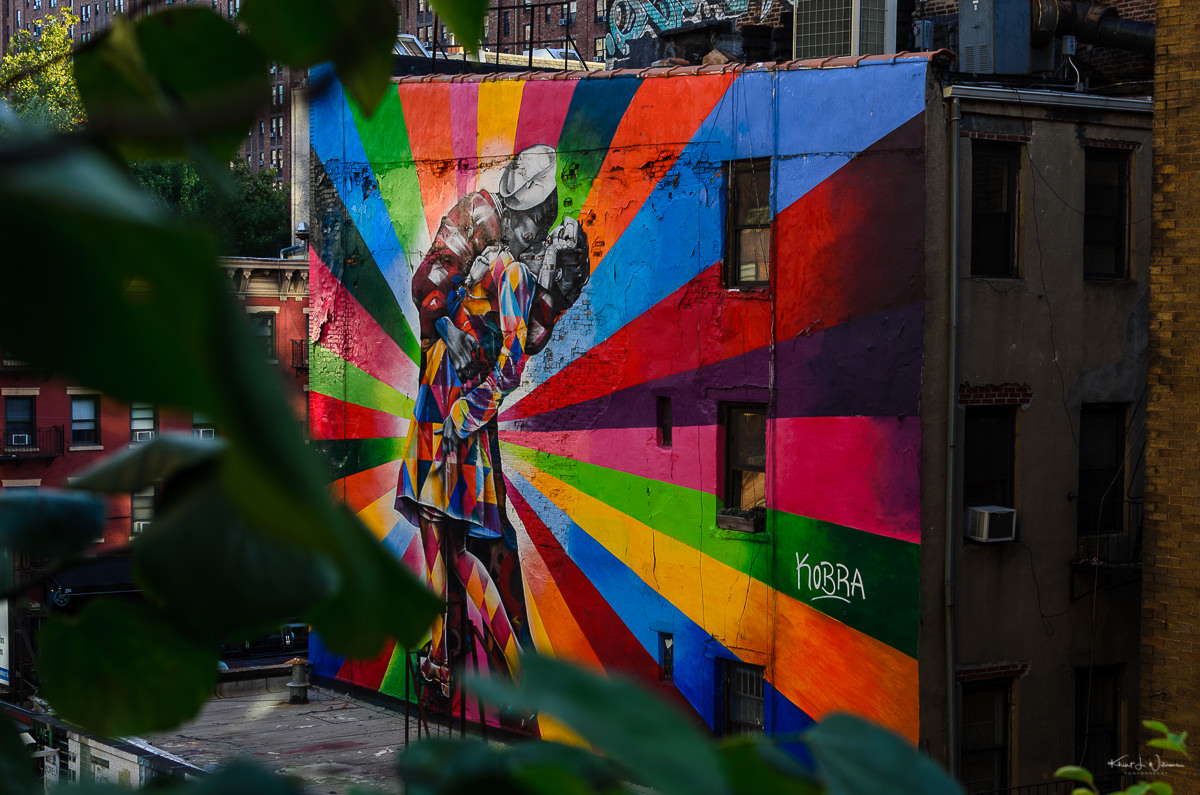Marsha's PPAC #18 and Patti's Lens-Artists Photo Challenge #170: Street Art challenge me to explore art–outdoors, in the park, on the street–for all to enjoy.
I knew I would have to work hard to find something for this week's challenge. There are very few examples of public art out here in the small town suburbs of New Jersey. I don't think the art displays on the Princeton University campus count as public art since. While the University grounds are generally open to the public, it's private property and the art installations are not visible from the street. I thought I might have to dig through the catalogue to find something from my past trips into New York City or Philadelphia.
Over the past several years, I have unintentionally photographed a few of the murals that are visible while walking The High Line in New York City. Coincidentally, both murals were the work of an artist I only know as Kobra.

I also have more recent photographs of New York City's largest art installation, The Vessel at Hudson Yards.
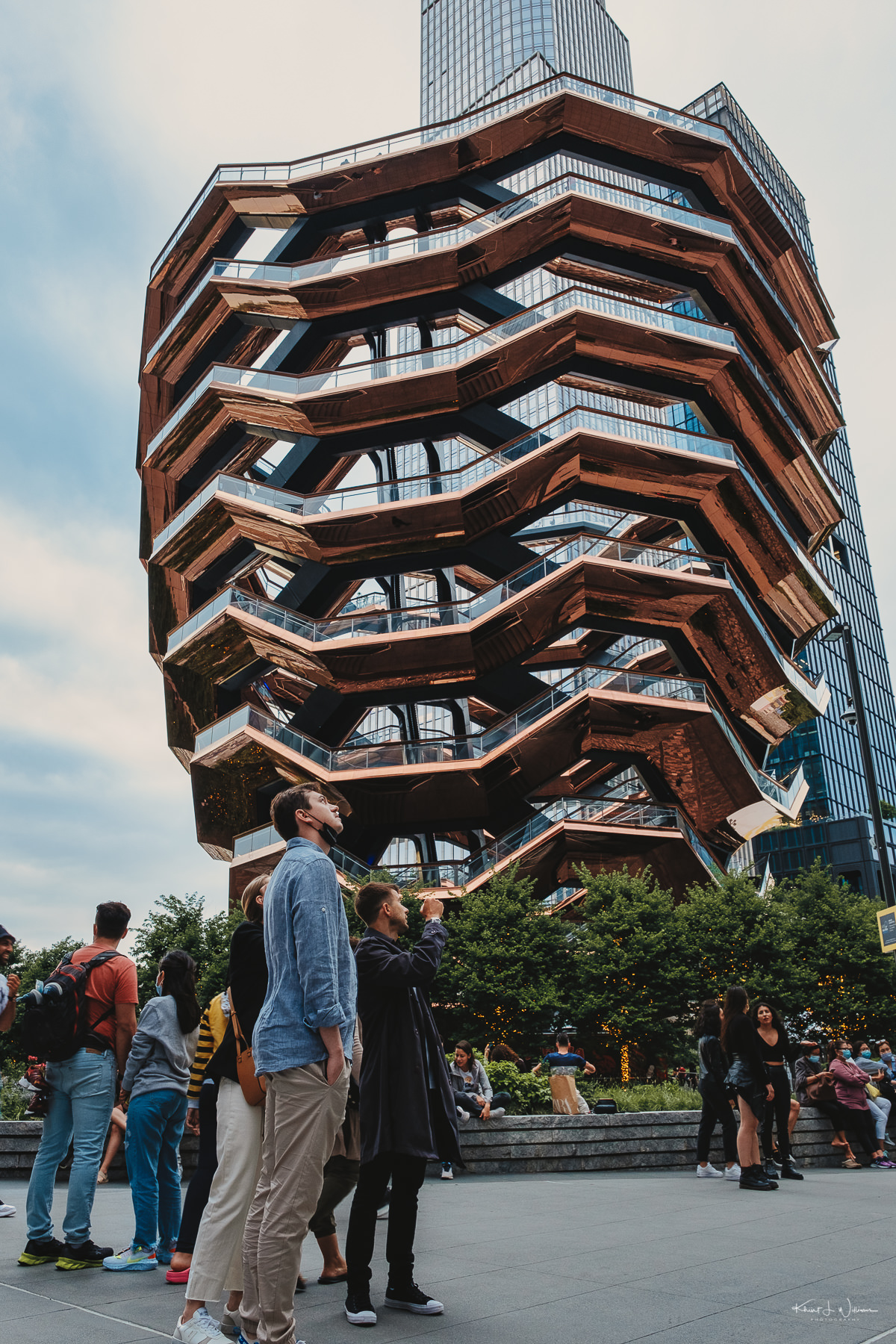
But I wanted to get out and capture something new, something local. After a quick search on Google, I found several projects sponsored by the Princeton Arts Council. I compiled a list and Bhavna agreed to take a drive into Princeton. I had hoped for good sunlight for enhanced colour, but the sky remained cloudy all day.
Bhavana and I parked on Witherspoon Street and walked a short distance to Witherspoon Bread Company on the corner of Paul Robeson and Witherspoon. Across from the bakery is the Arts Council of Princeton. On the wall of the bakery is a mural by Illia Barger, entitled Continuum. The mural commemorates The Herban Garden, Writers Block, and Quark Park, three public garden projects that existed on the side of the property. The bakery owners, restaurateurs Carlo and Raoul Momo, allowed the space to be used and supported the projects.
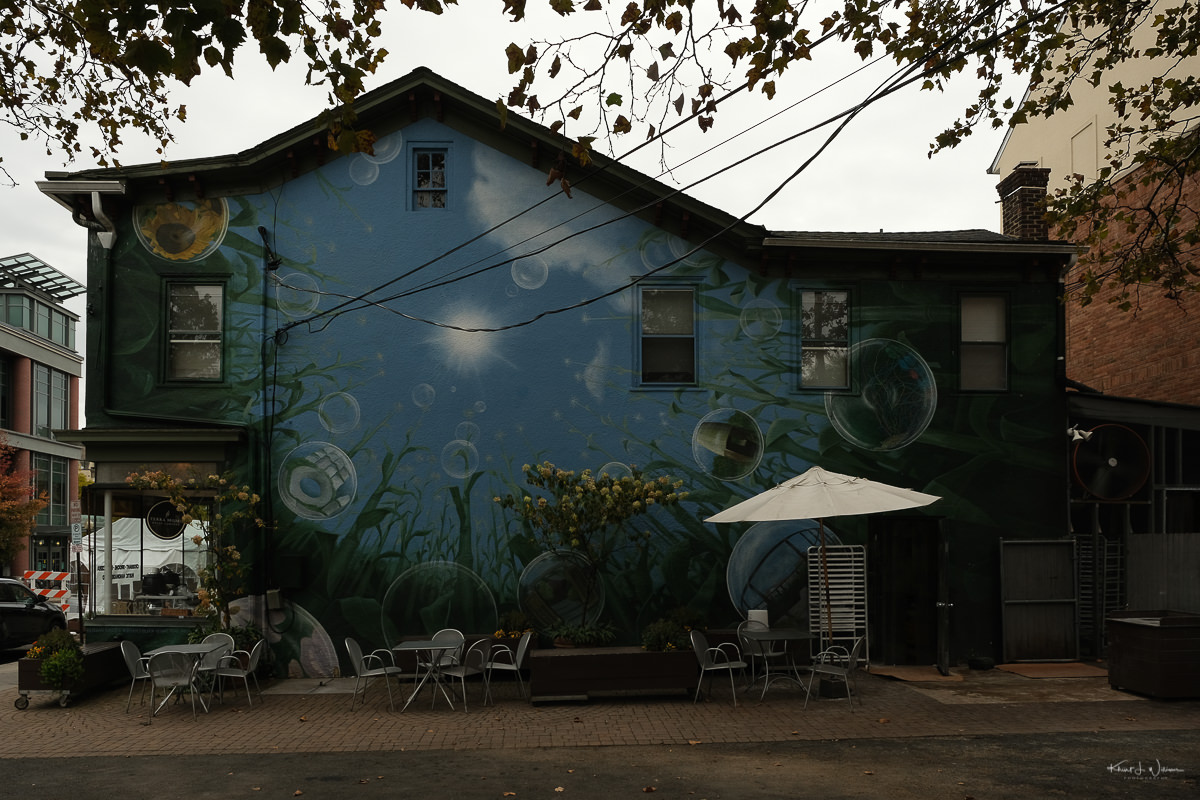
Glass bubbles float across the sky, like the glass bubbles from Quark Park, but they are filled with memories of Writers Block – the sunflowers and barn doors – and Herban Garden – a sculpture of a hand with plant life growing out of it by Robert Cannon.
A developer bought the property and built townhouse-style condominium units.

From the Continuum mural, we crossed Witherspoon Street and walked down to Spring Street to photograph Hurry Sundown, the Arts Council of Princeton's latest mural, which was completed in August of 2021. The mural was designed by local artist Ben Colbert, a former board member of the Arts Council of Princeton. It represents Autumn, with the varying coloured lines evoking "diminishing daylight, striking sunset, distant mountains, and a harvested field".
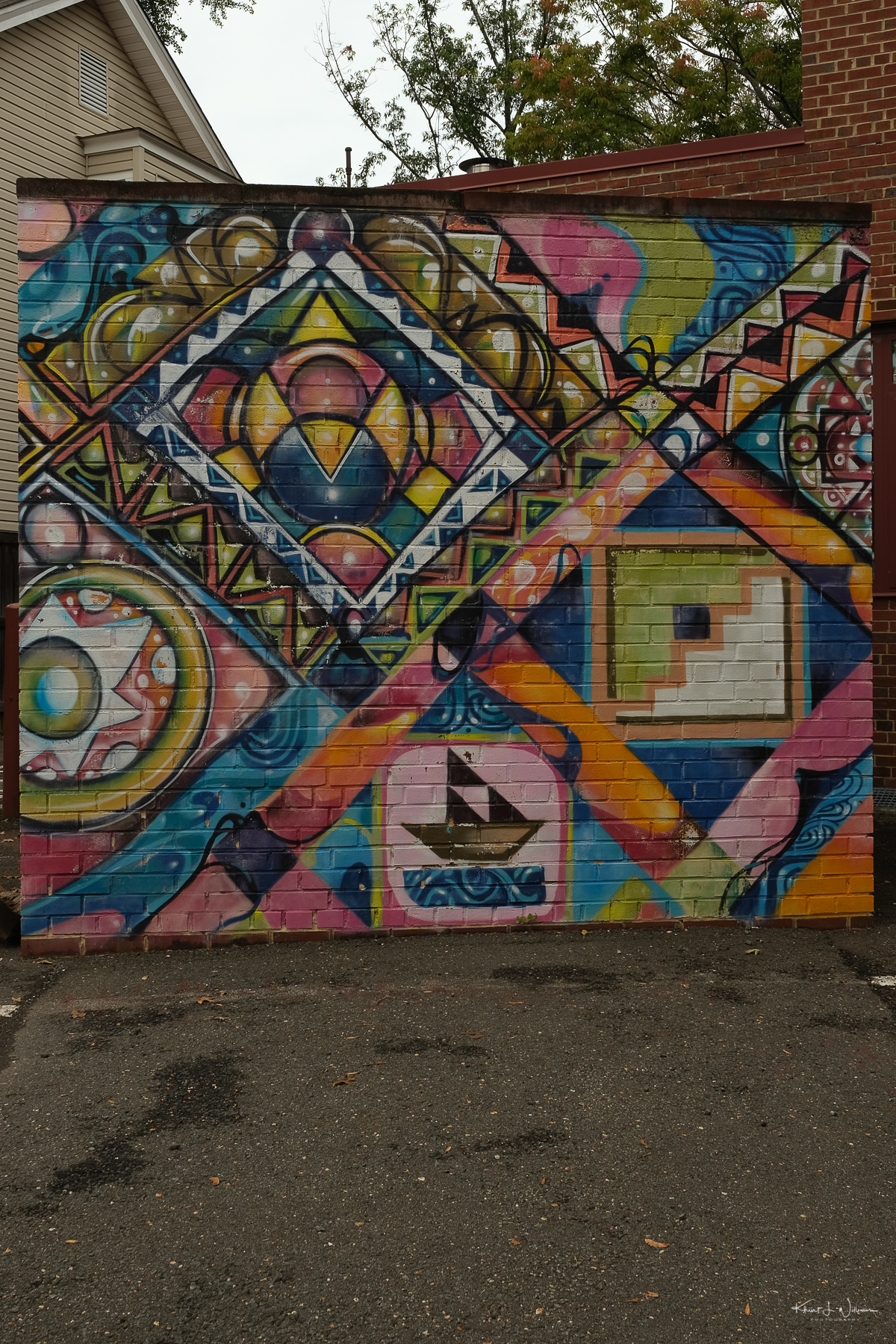
We doubled back towards Paul Robeson to find the third mural on my shot list. Entitled Underground Railroad, this mural was created by Will Condry and James Kelewae of Trenton's S.A.G.E. Coalition. The Underground Railroad mural is far in the back of the grounds of the Princeton Arts Council but still visible if one is observant and wanders in from the street. The mural is an interpretative representation of the historic underground railroad used by enslaved African Americans seeking freedom.
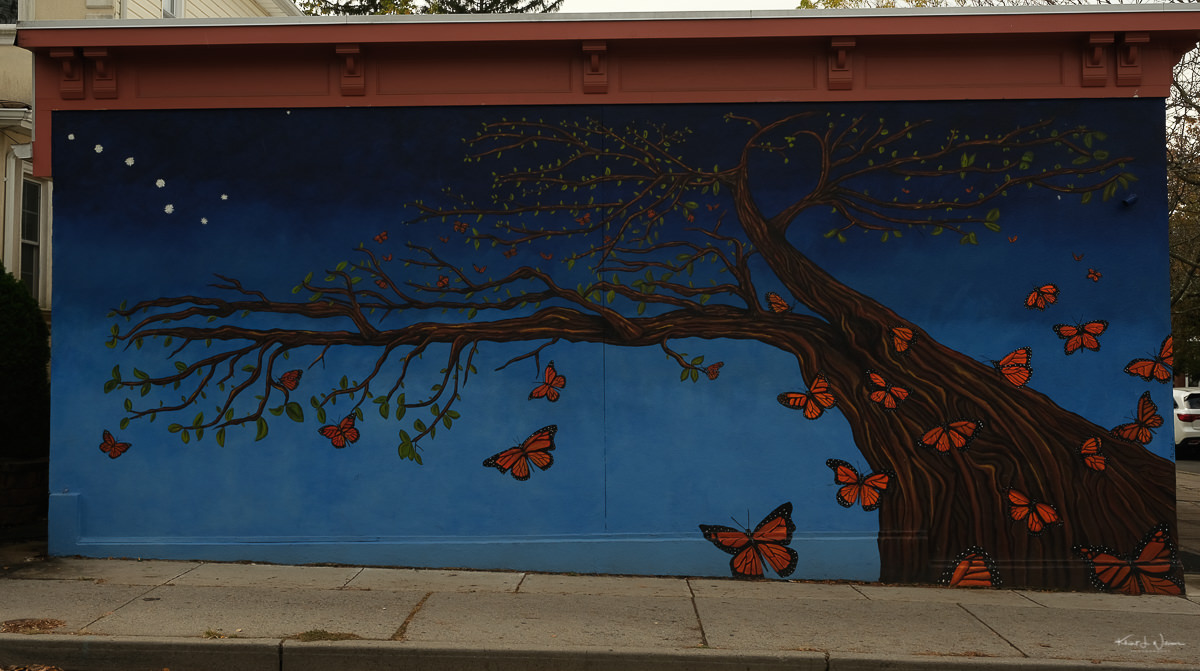
The last mural on my shot list is Journey by local artist Marlon Davila, who grew up in the Witherspoon-Jackson neighbourhood. This mural is on the side of the outer wall of Lupita's Groceries on Leigh Avenue and John Street. It's my favourite. I love this shade of blue, and the orange-red butterflies are captivating.
After getting the shot I wanted, Bhavna and I went into Lupita's for some coconut water and cornbread.
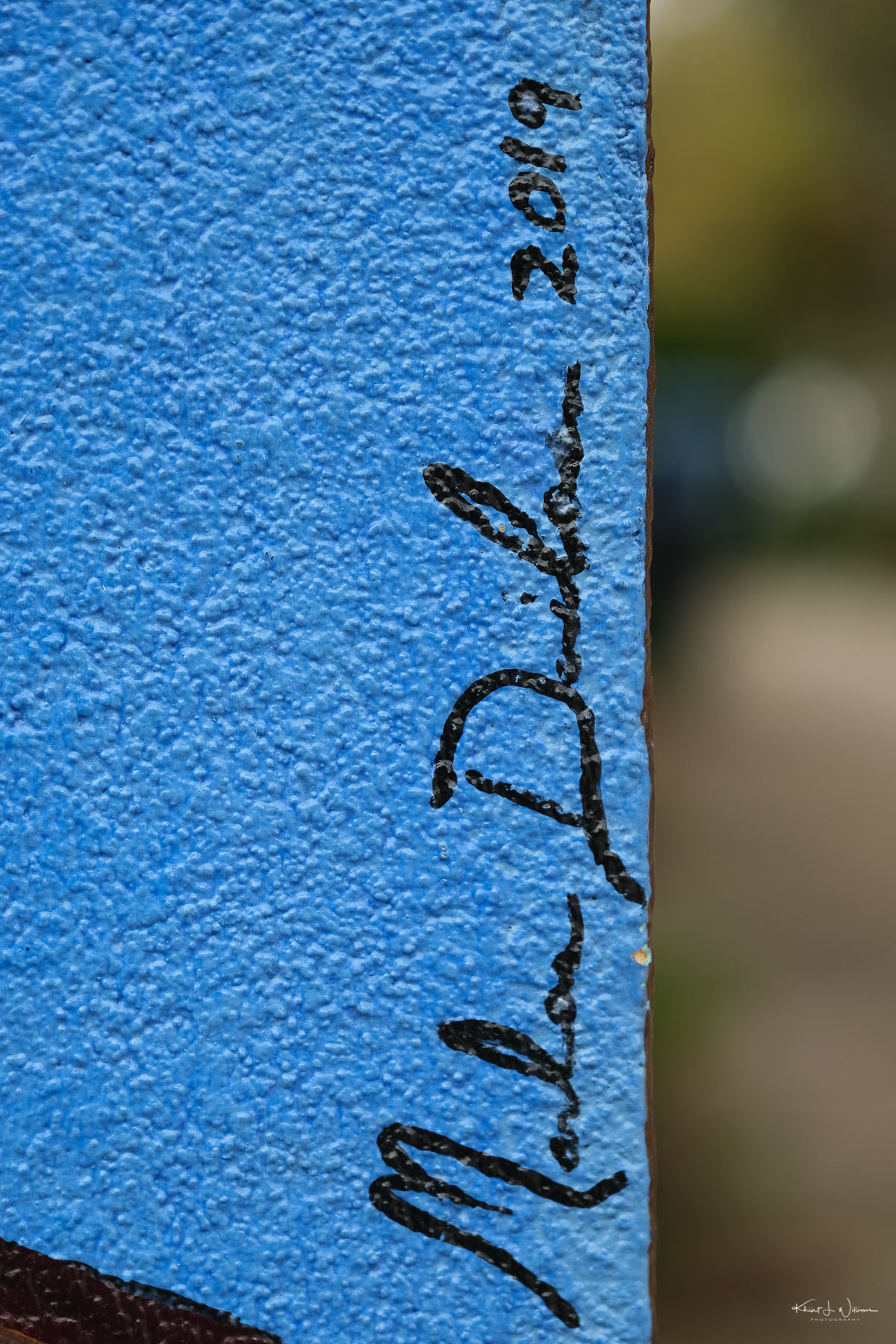

The night photography images in Jesse Yardley 's article, Rediscovering my passion for photography, in Fuji-X Passion Magazine are stunning and inspiring
"Night photography has reignited my passion for photography in a major way. I get such a thrill from the reaction to my work and the opportunities it has afforded me."
I enjoyed reading about his photography journey from film to digital to Fuji. I hope he will offer a course on his process.
I read Frank Herbert 's Dune circa 1994 and loved it. The mixture of science and middle eastern religious mysticism was thought-provoking. Dune's mentats were reminders that the word "computer" originally applied to human beings. The fact that the novel required a glossary to understand the dialogue made it even more enjoyable.
This comparison of Frank Herbert's Dune with Isaac Asimov's Foundation by Tim O'Reilly was a fascinating read.
Dune is clearly a commentary on the Foundation trilogy. Herbert has taken a look at the same imaginative situation that provoked Asimov's classic—the decay of a galactic empire—and restated it in a way that draws on different assumptions and suggests radically different conclusions. The twist he has introduced into Dune is that the Mule, not the Foundation, is his hero.
The Bene Gesserit are clearly parallel to the "scientist-shamans" of the Foundation. Their science of prediction and control is biological rather than statistical, but their intentions are similar to those of Asimov's psychohistorians. In a crumbling empire, they seek to grasp the reins of change. The Sisterhood sees the need for genetic redistribution—which ultimately motivates the jihad—and has tried to control that redistribution by means of their breeding program. The Kwisatz Haderach, the capstone of their plan, is not its only goal. Their overall intention is to manage the future of the race. Paul, like the Mule, is the unexpected betrayal of their planned future.
The irony is that Paul is not a freak but an inevitable product of the Bene Gesserit's own schemes. Although he has come a generation early in the plan due to Jessica's willfulness in bearing a son instead of a daughter, the real surprise is not his early birth but the paradox of the Sisterhood's achievement: the planned instrument of perfect control, the Kwisatz Haderach, was designed to see further than his creators, He could not help but know the emptiness of their dreams. The universe cannot be managed; the vitality of the human race lies in its random generation of new possibilities. The only real surety is that surprises will occur. In contrast to the Foundation trilogy's exaltation of rationality's march to predicted victory, Dune proclaims the power and primacy of the unconscious and the unexpected in human affairs. Paul's wild ride on the jihad, not the careful Bene Gesserit gene manipulation, provides the answer to the Empire's needs.
